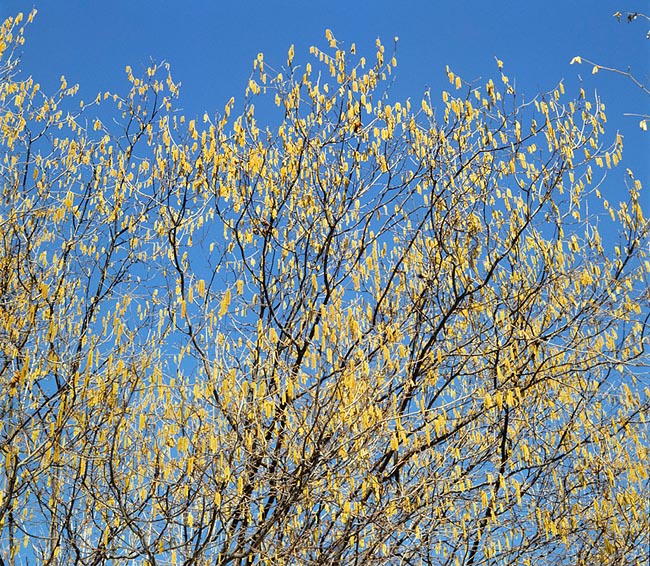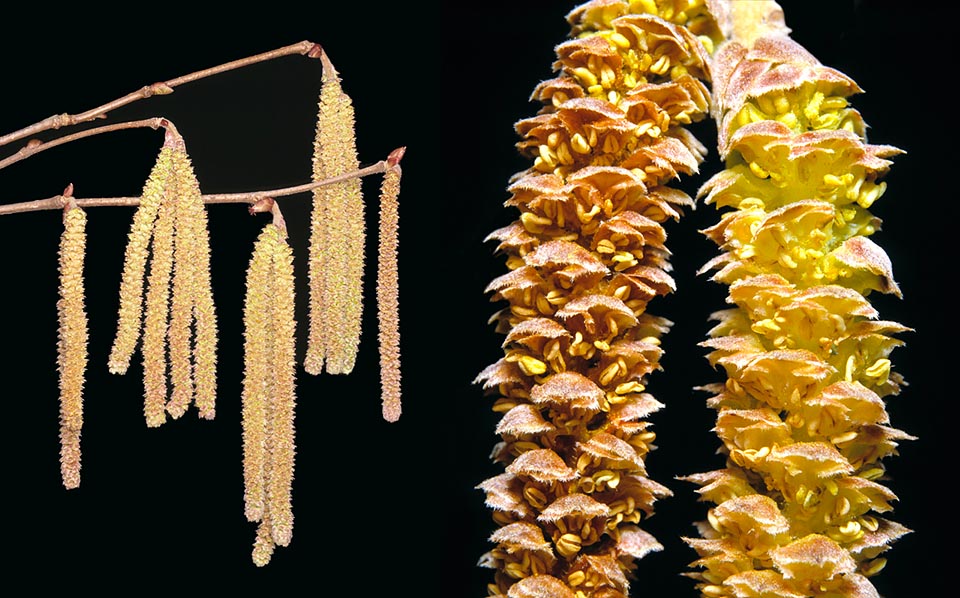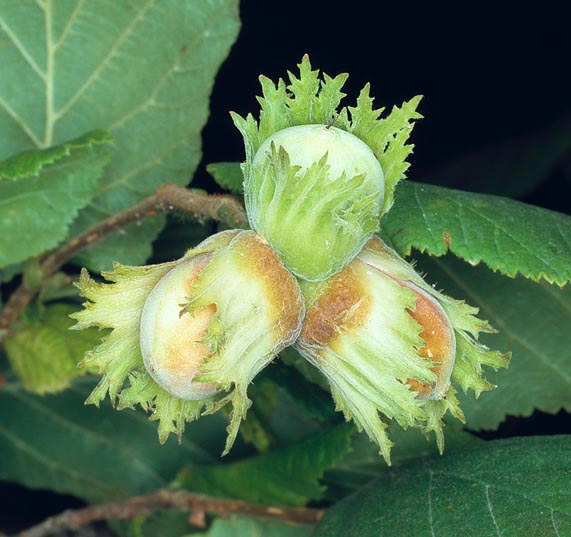Family : Betulaceae

Text © Dr Barbara Barisani

English translation by Mario Beltramini

A Hazel (Corylus avellana) in spring, full of male inflorescence called aments or catkins © Giuseppe Mazza
The name of the genus comes from the Greek κορις = helmet (with reference to the foliar involucre of the fruit), whilst the name of the species comes from the name of the city of Avella, in the province of Avellino, important centre of cultivation of the hazelnuts.
It is diffused in Europe, excluding northern Scandinavia, in Asia Minor and in North Africa.
In Italy, it grows up in the plains, hills and mountains up to about 1400 m.
It loves calcareous and dry soils.
It is a colonizing plant, capable to adapt to various environmental conditions.
It forms patches, as from the roots originate new shoots which then will develop forming new plants.
The environments of choice are the sparse woods of deciduous latifolias (especially oaks), shrub-lands and open spaces.
The common names are: Haselstrauch (German), Noisetier, Coudrier (French), Nocciolo (Italian), Hazel (English), Avellano comùn (Spanish).
The hazel is a 1 to 5 m tall shrub. The bark is smooth, of greyish brown colour, with scattered paler dots. On the younger branches are present reddish hairs and black glandular hairs.

Left, among aments, we see a tiny female flower with its red stigma. Right, enlarged view of the catkins loaded of pollen © Giuseppe Mazza
The male inflorescences (aments) form on the small branches without leaves during the summer and can be seen during the winter on the bare plant. The female flowers develop in spring together with the leaves. They are small and difficult to see, hidden among the buds of the one year old branches, from which are visible only the charming red styles.

The hazelnuts, grouped 2 to 5, ripe in August-September © Giuseppe Mazza
Furthermore, the species is often self-sterile, that is, the fecundation among flowers of the same individual is impossible and, in order to obviate to this problem, in the cultivations they alternate plants of different varieties, with scalar flowering. The fruits, the hazelnuts, present in groups from 2 to 5, ripe in August-September. They are surrounded by a bract subdivided in segments with indented margin, have a woody part and have different shapes, from round to oblong.
The hazel wood is white-reddish, easy to work being soft and flexible and is utilized I the production of coverings. The cotyledons of the fruits are very oleaginous. From them they get, by pressing, edible oil, of pleasant taste, utilized also in the cosmetic industry for its emollient properties.
The leaves and the bark contain tannins and resins, substances to which are recognized astringent, anti-inflammatory, antipyretic and depurative properties. The presence of the hazelnuts, also if in traces, is to be shown, as required by law, on the food labels, as it can be cause of alimentary allergies.
The Common hazel is widely cultivated for its fruits, much required by the confectionary industry. Amongst the most diffused Italian cultivars, we recall the Tonda Gentile of the Langhe (Langhe, Piedmont), the Tonda Gentile Romana (province of Viterbo, Lazio), the Tonda di Giffoni (province of Caserta, Campania), the Nostrale or Sicilian (Sicily).
Several ornamental varieties are cultivated, among which we cite the hanging variety, the twisted variety, the variety “Aurea” with golden yellow foliage and the fuscous-red variety, with red leaves.
→ To appreciate the biodiversity within the BETULACEAE family please click here.
